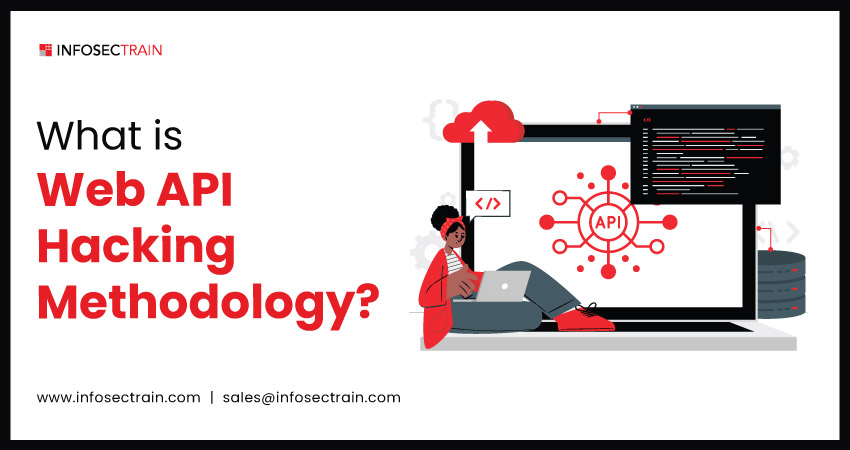What is Web API Hacking Methodology?
Web API hacking has emerged as a critical focus area in the cybersecurity landscape. With the digital world heavily reliant on Application Programming Interfaces (APIs), their security is paramount. In this article, we will delve into the realm of web API hacking methodology, starting with the fundamentals and progressing into a comprehensive exploration of the tactics and instruments employed by both inexperienced and experienced experts.

Table of Contents
What is API?
What is Web API Hacking?
Methodology for Web API Hacking
Key Parts of an HTTP Request
Web API Hacking Tools
What is API?
APIs, or Application Programming Interfaces, serve as the communication bridges allowing different software applications to interact. They are the unseen heroes behind the seamless functioning of our favorite apps, websites, and devices. For example, when you place an order on Amazon, an API facilitates the communication between Amazon’s platform and your bank to process the payment securely. With APIs playing such a vital role in our digital lives, it is no surprise that they have become a prime target for cyberattacks.
What is Web API Hacking?
Web API hacking is a form of security testing that focuses on discovering weaknesses within APIs. By focusing on API endpoints, malicious actors seek to achieve unauthorized access to confidential information, disrupt services, or potentially assume control over entire systems. The prevalence of APIs in modern web applications means that web API security is critical to overall cybersecurity. Over 80% of all web traffic now relies on API requests, making them a high-value target for ethical hackers and malicious attackers.
Methodology for Web API Hacking
HTTP Fundamentals: The Backbone of API Communication
To embark on a web API hacking journey, it’s crucial to understand how APIs communicate, primarily through HTTP (Hypertext Transfer Protocol) requests. HTTP is the common language that allows web browsers, clients, and servers to converse. When you enter a URL into your web browser, your computer dispatches an HTTP request to the hosting server. In response, the server provides the necessary HTML and associated files to render the website.
APIs are like messengers that help computer programs communicate and share information. When you visit a website, your computer asks for a webpage, and the website sends it back. With APIs, they exchange organized information in computer-friendly formats like JSON or XML. Different types of APIs, such as REST and GraphQL, prefer different formats like JSON, while SOAP uses XML. To identify an API, you can check the request’s “Content” – if it’s “application/json” or “application/xml,” it’s likely an API endpoint.
Key Parts of an HTTP Request
HTTP requests comprise three essential components:
- Request URL: This is the resource address you wish to access, consisting of the hostname (the domain name) and the path (the resource’s location on the server).
- Request Method: It specifies how you intend to interact with the resource. Common methods include GET (retrieve data), POST (submit data), PUT (update data), and DELETE (remove data).
- Request Body (if any): Some methods, like POST, require a body to transmit data between the client and server. The body contains information about the data type and how it should be processed.
More CRUD: Create, Read, Update, Delete
CRUD, which stands for Create, Read, Update, Delete, is the foundation for most web applications today. These operations align closely with HTTP request methods:
- Create: POST
- Read: GET
- Update: PUT/PATCH
- Delete: DELETE
While CRUD and REST often coexist, it’s vital to distinguish them. REST represents an architectural style, a standard for building APIs, while CRUD defines a web application’s core functions. Understanding this distinction is essential to navigating the world of APIs effectively.
Web API Hacking Tools
When diving into web API hacking, choosing the right tools is essential. While there is a multitude of tools available, focusing on two fundamental ones can suffice for most beginners:
- API Client – Postman: Postman is a robust tool for creating, sharing, testing, and documenting APIs. It is available as a standalone app and is highly recommended for versatility.
- Web Proxy – Burp Suite: Burp Suite is a comprehensive web penetration testing toolkit providing essential API hacking capabilities. While the free Community Edition is an option, the Professional Edition is recommended for more advanced functionality and performance.
Master CEH with InfosecTrain
Mastering web API hacking methodology is crucial for cybersecurity professionals, especially those pursuing Certified Ethical Hacker (CEH) certification. Understanding the intricacies of API security is fundamental in today’s interconnected digital landscape, as APIs play a pivotal role in modern web applications. CEH training from InfosecTrain equips individuals with the knowledge and tools to defend against API-related threats, helping safeguard critical data and systems in an increasingly vulnerable digital environment.
TRAINING CALENDAR of Upcoming Batches For CEH v13
| Start Date | End Date | Start - End Time | Batch Type | Training Mode | Batch Status | |
|---|---|---|---|---|---|---|
| 06-Apr-2025 | 24-May-2025 | 09:00 - 13:00 IST | Weekend | Online | [ Close ] | |
| 26-Apr-2025 | 01-Jun-2025 | 19:00 - 23:00 IST | Weekend | Online | [ Close ] | |
| 11-May-2025 | 28-Jun-2025 | 09:00 - 13:00 IST | Weekend | Online | [ Open ] | |
| 31-May-2025 | 06-Jul-2025 | 19:00 - 23:00 IST | Weekend | Online | [ Open ] |







 1800-843-7890 (India)
1800-843-7890 (India)